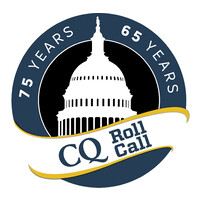A Crisis of Protection: The Secret Service Under Fire
September 27, 2024, 6:43 am

Location: United States, District of Columbia, Washington
Employees: 201-500
Founded date: 1945

Location: United States, District of Columbia, Washington
Employees: 51-200
Founded date: 1955
The Secret Service is in the hot seat. A recent Senate probe has exposed serious failures in the agency's protective measures, particularly during a Trump rally shooting in July. The findings are alarming. They reveal a web of miscommunication, inadequate training, and a lack of accountability that could have led to a tragedy.
In the world of security, every second counts. Yet, the report indicates that the Secret Service was slow to respond to warnings about a suspicious individual. Almost 30 minutes before the shooting, agents were alerted to a man with a rangefinder. But the information didn’t reach the right people. Local law enforcement lost track of him. This was a missed opportunity, a gap in the safety net that should have been impenetrable.
The shooter was on the roof, armed and ready. Just two minutes before the shots rang out, local law enforcement informed the Secret Service. But once again, the message failed to reach key personnel. A counter-sniper saw law enforcement rushing to the roof but didn’t alert Trump’s protective detail. It was a perfect storm of failures.
Senators are demanding answers. They want to know why there was no clear chain of command. Why was the AGR building, from which the shooter fired, left unsecured? The report indicates that local law enforcement told the Secret Service they lacked the manpower to lock it down. This is a glaring oversight. A former president was at risk, and the agency responsible for his safety dropped the ball.
The investigation was thorough. It sifted through 2,800 internal documents and conducted 12 in-depth interviews. The results are damning. The Secret Service’s internal investigation echoed the Senate’s findings, identifying communication gaps as a key issue. This isn’t a new problem. It’s a long-standing issue that the agency has failed to address adequately.
Training is another critical area of concern. The operator responsible for drone technology at the rally had less than an hour of hands-on training. This is unacceptable. In a high-stakes environment, every agent must be prepared. The lack of experience and knowledge about basic equipment functionality is a recipe for disaster.
The report also highlights contradictory information from the Secret Service. When pressed about who was in charge of the protective event, agents deflected responsibility. This lack of accountability is troubling. The agency must have a clear command structure, especially during high-profile events.
Funding for the Secret Service has been a contentious issue. Over the past decade, Congress has doubled the agency’s budget, now standing at $3 billion. Yet, some lawmakers argue that more money isn’t the solution. They point to management problems rather than resource shortages. The agency has received significant funding increases, but the results have not matched the investment.
In the wake of the Butler rally shooting, Congress is moving to bolster the Secret Service. They are considering additional funds as part of a stopgap measure to avoid a government shutdown. However, there’s a catch. Lawmakers want accountability before approving more money. They want to ensure that the agency can effectively protect those it is sworn to serve.
Recent events have only heightened concerns. An assassination attempt on Trump at his golf club in Florida has raised alarms. A man was arrested with a handwritten letter detailing a plot against the former president. This incident underscores the urgent need for effective security measures. The stakes are high, and the agency must rise to the occasion.
The Senate committee’s report calls for significant reforms. It suggests designating a single individual to approve all protective event plans. This would streamline communication and ensure that everyone is on the same page. Additionally, Congress could require the Secret Service to allocate resources based on threat levels, not the status of the protectee. This is a crucial step toward ensuring that all individuals under protection receive equal attention.
Senators are divided on the funding issue. Some argue for increased resources, while others insist that the focus should be on management and accountability. The debate is heated. The agency’s failures have led to a crisis of confidence. Lawmakers are demanding change, and the public is watching closely.
The Secret Service must confront its shortcomings head-on. The agency needs new leadership, possibly from outside its ranks. Fresh perspectives can bring about the fundamental reforms necessary to restore trust. The time for action is now. The agency must evolve to meet the challenges of a changing world.
In conclusion, the Secret Service stands at a crossroads. The recent Senate probe has laid bare its vulnerabilities. The agency must learn from its mistakes. It must adapt and improve. The safety of high-profile individuals depends on it. The nation deserves a Secret Service that is prepared, responsive, and accountable. Anything less is unacceptable. The stakes are too high, and the consequences of failure are dire. The agency must rise to the occasion, or it risks losing its credibility and purpose.
In the world of security, every second counts. Yet, the report indicates that the Secret Service was slow to respond to warnings about a suspicious individual. Almost 30 minutes before the shooting, agents were alerted to a man with a rangefinder. But the information didn’t reach the right people. Local law enforcement lost track of him. This was a missed opportunity, a gap in the safety net that should have been impenetrable.
The shooter was on the roof, armed and ready. Just two minutes before the shots rang out, local law enforcement informed the Secret Service. But once again, the message failed to reach key personnel. A counter-sniper saw law enforcement rushing to the roof but didn’t alert Trump’s protective detail. It was a perfect storm of failures.
Senators are demanding answers. They want to know why there was no clear chain of command. Why was the AGR building, from which the shooter fired, left unsecured? The report indicates that local law enforcement told the Secret Service they lacked the manpower to lock it down. This is a glaring oversight. A former president was at risk, and the agency responsible for his safety dropped the ball.
The investigation was thorough. It sifted through 2,800 internal documents and conducted 12 in-depth interviews. The results are damning. The Secret Service’s internal investigation echoed the Senate’s findings, identifying communication gaps as a key issue. This isn’t a new problem. It’s a long-standing issue that the agency has failed to address adequately.
Training is another critical area of concern. The operator responsible for drone technology at the rally had less than an hour of hands-on training. This is unacceptable. In a high-stakes environment, every agent must be prepared. The lack of experience and knowledge about basic equipment functionality is a recipe for disaster.
The report also highlights contradictory information from the Secret Service. When pressed about who was in charge of the protective event, agents deflected responsibility. This lack of accountability is troubling. The agency must have a clear command structure, especially during high-profile events.
Funding for the Secret Service has been a contentious issue. Over the past decade, Congress has doubled the agency’s budget, now standing at $3 billion. Yet, some lawmakers argue that more money isn’t the solution. They point to management problems rather than resource shortages. The agency has received significant funding increases, but the results have not matched the investment.
In the wake of the Butler rally shooting, Congress is moving to bolster the Secret Service. They are considering additional funds as part of a stopgap measure to avoid a government shutdown. However, there’s a catch. Lawmakers want accountability before approving more money. They want to ensure that the agency can effectively protect those it is sworn to serve.
Recent events have only heightened concerns. An assassination attempt on Trump at his golf club in Florida has raised alarms. A man was arrested with a handwritten letter detailing a plot against the former president. This incident underscores the urgent need for effective security measures. The stakes are high, and the agency must rise to the occasion.
The Senate committee’s report calls for significant reforms. It suggests designating a single individual to approve all protective event plans. This would streamline communication and ensure that everyone is on the same page. Additionally, Congress could require the Secret Service to allocate resources based on threat levels, not the status of the protectee. This is a crucial step toward ensuring that all individuals under protection receive equal attention.
Senators are divided on the funding issue. Some argue for increased resources, while others insist that the focus should be on management and accountability. The debate is heated. The agency’s failures have led to a crisis of confidence. Lawmakers are demanding change, and the public is watching closely.
The Secret Service must confront its shortcomings head-on. The agency needs new leadership, possibly from outside its ranks. Fresh perspectives can bring about the fundamental reforms necessary to restore trust. The time for action is now. The agency must evolve to meet the challenges of a changing world.
In conclusion, the Secret Service stands at a crossroads. The recent Senate probe has laid bare its vulnerabilities. The agency must learn from its mistakes. It must adapt and improve. The safety of high-profile individuals depends on it. The nation deserves a Secret Service that is prepared, responsive, and accountable. Anything less is unacceptable. The stakes are too high, and the consequences of failure are dire. The agency must rise to the occasion, or it risks losing its credibility and purpose.